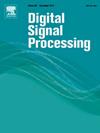CDAN:用于弱光图像增强的卷积密集注意力引导网络
IF 2.9
3区 工程技术
Q2 ENGINEERING, ELECTRICAL & ELECTRONIC
引用次数: 0
摘要
低照度图像的特点是光照不足,会带来清晰度降低、色彩暗淡和细节减少等挑战。低照度图像增强是计算机视觉领域的一项重要任务,旨在通过改善亮度、对比度和整体感知质量来纠正这些问题,从而促进准确的分析和解读。本文介绍了卷积密集注意力引导网络(CDAN),这是一种用于增强弱光图像的新型解决方案。CDAN 将基于自动编码器的架构与卷积和密集块整合在一起,并辅以注意力机制和跳过连接。这种架构可确保高效的信息传播和特征学习。在训练过程中,我们采用了一种复合损失函数,将 L2 和 VGG 损失合并,以改善数值和感知结果。此外,专门的后处理阶段还能改善色彩平衡和对比度。与最先进的弱光图像增强结果相比,我们的方法取得了显著的进步,在各种具有挑战性的场景中展示了其鲁棒性。我们的模型在基准数据集上表现出色,有效地减轻了曝光不足的问题,并在各种弱光场景中熟练地恢复了纹理和色彩。这一成就凸显了 CDAN 在各种计算机视觉任务中的潜力,特别是在极具挑战性的弱光条件下实现稳健的物体检测和识别。本文章由计算机程序翻译,如有差异,请以英文原文为准。
CDAN: Convolutional dense attention-guided network for low-light image enhancement
Low-light images, characterized by inadequate illumination, pose challenges of diminished clarity, muted colors, and reduced details. Low-light image enhancement, an essential task in computer vision, aims to rectify these issues by improving brightness, contrast, and overall perceptual quality, thereby facilitating accurate analysis and interpretation. This paper introduces the Convolutional Dense Attention-guided Network (CDAN), a novel solution for enhancing low-light images. CDAN integrates an autoencoder-based architecture with convolutional and dense blocks, complemented by an attention mechanism and skip connections. This architecture ensures efficient information propagation and feature learning. During training, we utilize a composite loss function that merges L2 and VGG losses for improved numeric and perceptual results. Furthermore, a dedicated post-processing phase refines color balance and contrast. Our approach demonstrates notable progress compared to state-of-the-art results in low-light image enhancement, showcasing its robustness across a wide range of challenging scenarios. Our model performs remarkably on benchmark datasets, effectively mitigating under-exposure and proficiently restoring textures and colors in diverse low-light scenarios. This achievement underscores CDAN's potential for diverse computer vision tasks, notably enabling robust object detection and recognition in challenging low-light conditions.
求助全文
通过发布文献求助,成功后即可免费获取论文全文。
去求助
来源期刊

Digital Signal Processing
工程技术-工程:电子与电气
CiteScore
5.30
自引率
17.20%
发文量
435
审稿时长
66 days
期刊介绍:
Digital Signal Processing: A Review Journal is one of the oldest and most established journals in the field of signal processing yet it aims to be the most innovative. The Journal invites top quality research articles at the frontiers of research in all aspects of signal processing. Our objective is to provide a platform for the publication of ground-breaking research in signal processing with both academic and industrial appeal.
The journal has a special emphasis on statistical signal processing methodology such as Bayesian signal processing, and encourages articles on emerging applications of signal processing such as:
• big data• machine learning• internet of things• information security• systems biology and computational biology,• financial time series analysis,• autonomous vehicles,• quantum computing,• neuromorphic engineering,• human-computer interaction and intelligent user interfaces,• environmental signal processing,• geophysical signal processing including seismic signal processing,• chemioinformatics and bioinformatics,• audio, visual and performance arts,• disaster management and prevention,• renewable energy,
 求助内容:
求助内容: 应助结果提醒方式:
应助结果提醒方式:


